Native Bombay dishes up indigenous fare from India with eloquence
The menu plays on the strengths of regional ingredients, served in a beautifully-repurposed ice factory.
When you read about a restaurant opening in one of the quaintest heritage districts of the city–Ballard Estate–it builds excitement. And Native Bombay takes that up a few notches further being housed in a 143-year-old ice factory–said to be Asia’s oldest. It’s been creating serious buzz since it opened doors just a month ago, for its shout out to indigenous food and rare ingredients sourced from different states, something you probably never dreamt of savouring in a fine-dine.
And yet, here it is, doing just that, by breaking away from familiar Indian food. YS Life checked out why this place gives you a bold return to your roots, in more ways than one.
Industrial charm meets contemporary style
Walking down Calicut Street, Native Bombay comes up as quaint, with its brick wall façade merging well into the vibes of the district. The charm unfolds inside, thanks to architect Kamal Malik and his son Arjun.
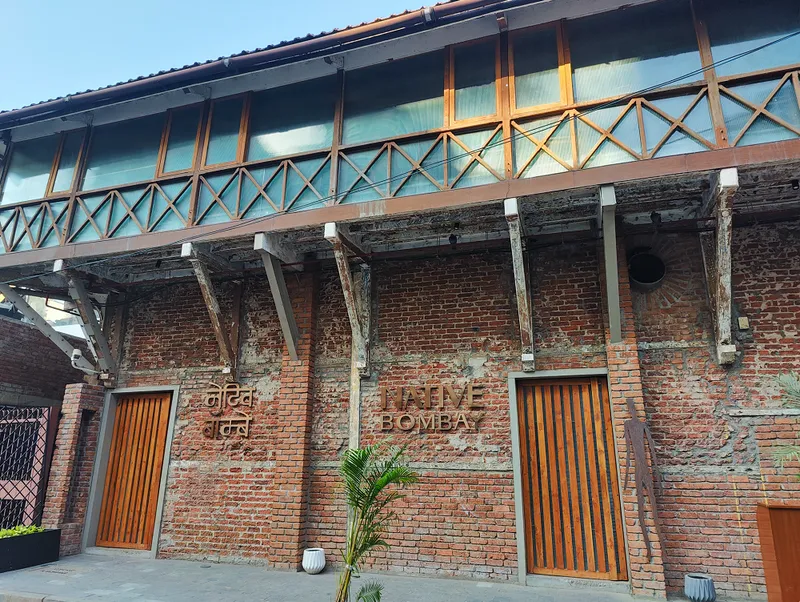
Native Bombay housed at Ballard Estate in Mumbai pays ode to regional Indian flavours
Sunday drunken brunch at W Goa’s Spice Traders is every pan-Asian lover’s dream-come-true
The first few steps are across a transparent floor under which lies the original cooling coils used to make ice in these premises back in the day. While the ground level houses IF.BE (that stands for Ice Factory.Ballard Estate), set around an old banyan tree and makes for an art, workshop, and exhibition space-cum-café, Native makes up the other side of things with a negroni bar at the ground level and a restaurant.
We head up the wooden staircase to the 90-seater restaurant. Clearly, the shoutout to the past continues here as you’re swathed with wooden elements from the exposed-wood ceilings and wood slat dividers to brick walls, lending it that old industrial feel. Metal and Warli art work add to the allure.
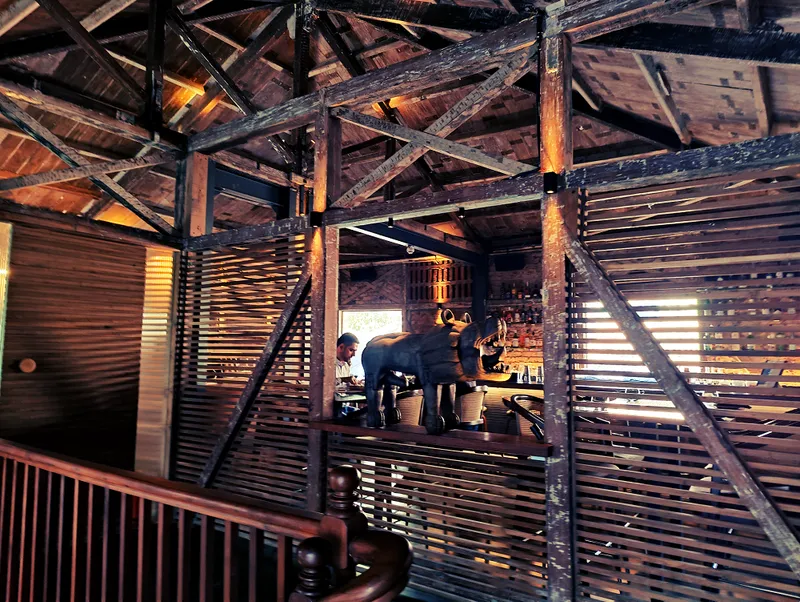
Wooden elements like the exposed wooden ceiling and panels are a key part of the design at Native Bombay
It’s close to noon and bathed in natural light, making it a tough choice on whether to sit indoors or along the balcony area with a two-seater concept that one would see in so many restaurants in the heyday, and I opted for the former.
Flavourful start
Native pays ode to India’s culinary culture in a rather welcome way, bringing to your plate the India you didn’t know much about. For when new establishments go either the regular butter chicken-palak paneer route or whip up deconstructed menus, Native simply looks into the food we’ve left behind us–indigenous ingredients and a style of cooking you grew up with in your own native place and town. It’s regional fare that is showcased with contemporary flair.
This is courtesy chef Bhairav Singh, a man who’s well-versed with villages and forests, having been to several of them from the North east to the border areas of Rajasthan, along the Western coast and way down to the South. “It took six months of trial and testing for the team to come up with the menu for Native,” he informs.
Below in the kitchen, a batch of bhut jolokia chillies–recently acquired from Dimpaur Market, Nagaland–are sitting in a chilli oil preserve, and that’s just one example of culinary treasures that find their way into the dishes.
In the Forbidden Falsa, berries are brought in from Delhi and blended with a house spice to give it a lovely mouthfeel, Tellicherry pepper is added to the Kerala mushroom pepper fry and the Jodhpuri Ker Sangri that saw Singh traipse into Rajasthan to dig out special ker berries and follows the recipe from his hometown. Resembling a large chilli, it is stuffed with beans and cheese and served with a punchy garlic chutney. While the food philosophy here is about being true to origins, Native also pays ode to it as you look around to see glass jars displaying ingredients that are used in the kitchen; almost 30 of them!
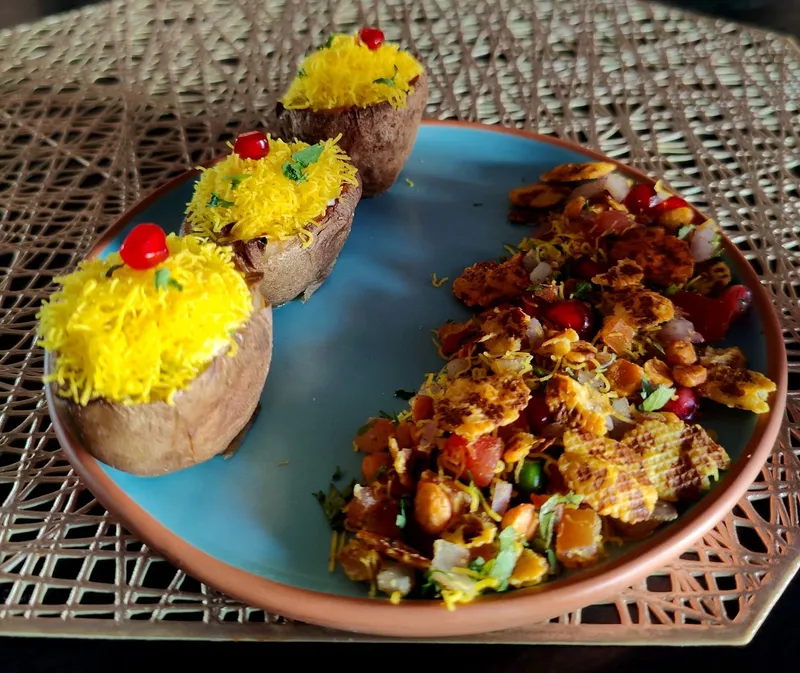
Bombay Bomb with baked talegaon potato shells filled with sev and chutney, served with chana jor garam
If you’re with a group of friends, try the Bombay Bomb, a chaat-style starter inspired by Mumbai’s street fare. Or bite into the mini naan bombs that are smoky and cheesy and score one up over the dough balls you may have enjoyed with your pizza at an Italian eatery! There are small and large plates as well as Native sets, a curation of items for those who don’t want a long scroll-through of the extensive menu.
Food theatre at its best
The mains definitely grab some desi swag and we won’t blame you for flooding your ’gram with pictures and videos of them. I ask for the Paan Paneer Tikka (a little hesitant because well, I ask myself, paan and paneer? But I’m curious, too). And the chef does not disappoint. This one’s a sensory delight! It arrives hissing on claypot, soft squares of malai paneer that are halved and stuffed with Banarasi betel leaf purée, a hint of sweet saunf chutney and surprise, it’s also got gulkand, making it a smooth and delicious bite. “I went to two states for this–the Benarasi paan leaf from UP and gulkand from Jaisalmer, Rajasthan, as the place is so known for it,” shares Chef Bhairav.

Paan Paneer Tikka prepared with betel leaf and gulkand is definitely one for your Instagram
Non-vegetarians will like to begin with the Kolhapuri Lamb chops. Prepared with the local Kolhapuri kharda mirchi, it is served with julienned khaman kakdi, jaggery, and peanuts to balance the effect of the spice. A must try is also the Mangalorean style Lobster Pulimunchi which offers a hot and sour sauce that rides on imli and a secret Native spice mix.
The Kohli Saab’s Butter Chicken has its own story. It pays tribute to Native’s founder Amardeep ‘Tony’ Singh of the famous Pritam Hotel. The rich cashew-tomato gravy with chicken is his original recipe from 1942. “Tony saab stood with me right in the kitchen and made it here, so it has his approval,” smiles Singh.
Another signature whipped up here is Maska Prawns, a beautifully plated King prawn baked in a clay-oven and served on a bed of jaggery and red chilli chutney. A light pearl garlic butter emulsion is poured over it to give it a final touch. The bite of prawn added with the slight piquancy of the red chilli and garlic is smoothened over by butter and I am sighing, already!
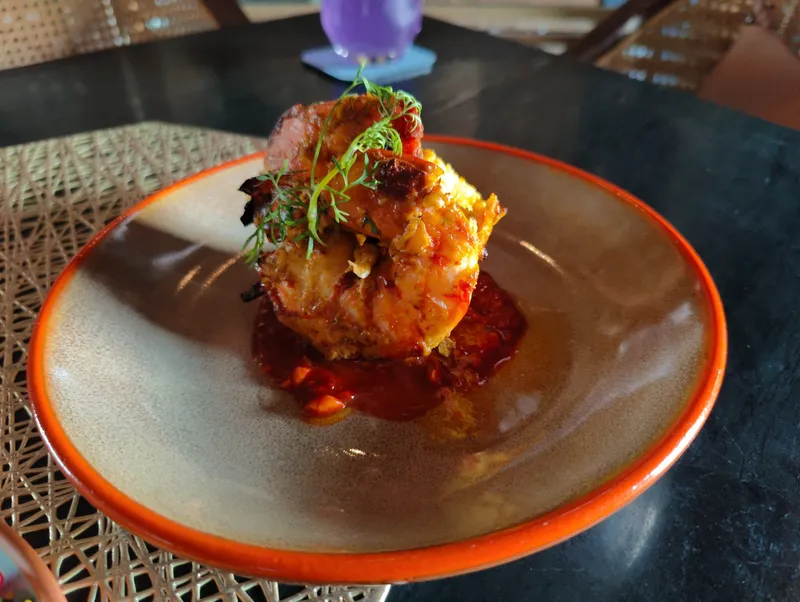
Maska Prawns baked in a clay oven and placed on a bed of jaggery chutney, butter, and pomegranate
This is a fabulous. Fish lovers may also find Goa on the menu with the tangy kokum-based Chonak Fish Curry or even the Mangalorean-style Lobster Pulimunchi that packs a keen hot and sour flavour that rides on imli and a secret Native spice mix. Ask for the crunchy Chur Chur Naan to eat this with.
Sweet talking
What does a flavoursome main course need? A meal ender that is light and settles you away from the spice. Try the Mishti Doi served with salted caramel and nougat crush making for a crunchy twist or Kerala Single-Origin Dark Chocolate, which has a gooey, comforting bite. On a hot day, I think the Matka Kulfi in flavours like peru, green chilli, and chikoo would be perfect.
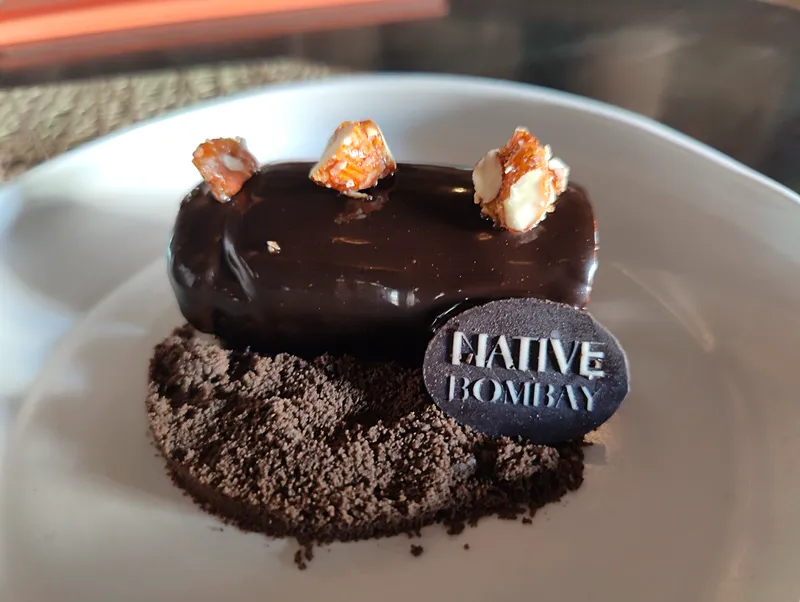
Kerala Single-Origin Dark Chocolate dessert is decadent
Since it’s just a little over a month here, the menu is in early days, but the feedback has been great and Bhairav Singh is glad his research has struck the right notes. “I think it’s definitely time for a return to indigenous Indian fare. There is so much yet that people don’t know about, for instance, when you think of UP, most people first think of Rampur and Lucknow for their kormas, but there’s a whole side to UP when it comes to vegetarian fare. There are dishes that aren’t discovered by restaurants yet.
In Indore, I visited Chappan Bazaar (the food market with 56 shops) and had this amazing chana chola, which has stayed in my memory. At Mandu in MP you get mandu ki imli and it’s the only place in Asia where this is found. I plan to use it the next menu,” he grins.
Edited by Megha Reddy







